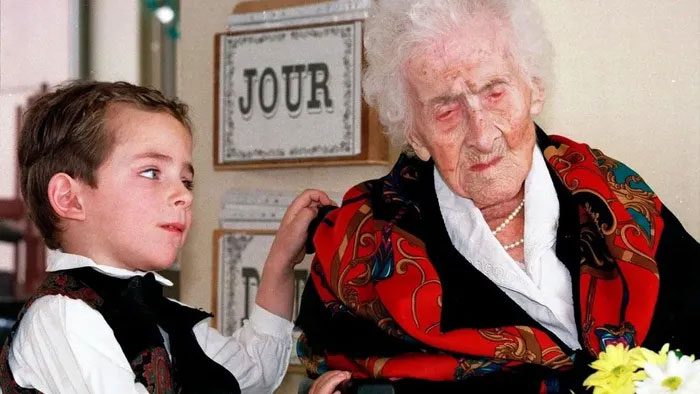Scientists Debate Whether There Is a Specific Limit to Human Lifespan Some believe that humans could live up to 1,000 years.
The average human lifespan has increased over the past century, thanks to advancements in medicine and improved living standards. Studies suggest that a person can live to be 70-80 years old if they have access to modern healthcare and a healthy lifestyle, according to Fortune.

Johanna Quaas, born in 1925, was recognized by the Guinness World Records in 2012 as the oldest gymnast. She was 86 years old at the time of her competition. (Photo: The Times).
To date, the longest-lived person on record is Jeanne Calment from France. She was born in 1875 and lived to be 122 years old. At the time of her birth, the average lifespan was only 40 years.
The limits of human lifespan remain a debated topic. Some geneticists argue that, in the course of human evolution, the age limit has been “programmed” into our genes at 115 years, according to Scientific America.
However, some scientists present more ambitious claims. One of them is João Pedro de Magalhães, a molecular biologist at the University of Birmingham, UK. He believes that humans could live to be 1,000 years old.
Aiming to Outsmart Death
Magalhães’s statement is based on research into long-lived animal species. These species possess characteristics that help extend lifespan, such as the excellent DNA repair capabilities of the bowhead whale and the numerous p53 genes that help suppress cancer in elephants.
He concludes that if aging cells are eliminated, humans could live for 1,000 years or even 20,000 years. He states that if aging is a “programmed” issue in humans, scientists could theoretically edit the key genes involved in the aging process.
Magalhães acknowledges that current technologies cannot achieve this, but he believes humans can develop such technologies in the future. He cites that in the 1920s, pneumonia was the leading cause of death, but it can now be easily treated with penicillin.
Thus, this molecular biologist boldly declares, “I want to outsmart death” by focusing his efforts on researching anti-aging therapies.
“I don’t think there will be a ‘cure’ for aging like penicillin for disease anytime soon. However, rapamycin is a potential candidate. It is used in transplantation processes. It slows down the cell’s metabolic processes, which is why it affects the aging process,” he says.

Jeanne Calment (right) was recognized as the world’s oldest person, living to be 122 years old. Photo: Quartz.
Richard Fargher, a biology professor at the University of Brighton, UK, wrote in Conversation in 2016 that evolutionary biology does not provide much evidence supporting the view that aging genes cause humans to grow old and die. Aging simply increases the likelihood of mortality and disease.
A Highly Controversial Topic
The average lifespan of a nation is relatively easy to calculate, but maximum lifespan is a different story. Some scientists argue that the natural maximum lifespan could reach 140-150 years.
In a study published in the scientific journal PLOS One in March 2023, researchers used mathematical methods to predict mortality trends based on data from hundreds of millions of people in 19 countries, born between 1700 and 1969.
This study suggests that those born later are entering the aging phase later and have a higher chance of living longer than previous generations.
For instance, the study estimates that Japanese women born in 1919 have a 50% chance of living to 122 years old. If born in 1940, they have a 50% chance of living beyond 130 years.
Based on these results, the research group predicts that someone will break Jeanne Calment’s longevity record in the next 40 years.
However, this research has also faced criticism for having significant gaps, such as not accounting for biological factors that make humans susceptible to age-related diseases like cancer. The scientific team also did not consider the potential advancements in medicine that could enhance lifespan.
“Essentially, lifespan is a biological phenomenon, not a mathematical issue,” says Stuart Jay Olshansky, a professor of epidemiology and biostatistics at the University of Illinois Chicago.



















































